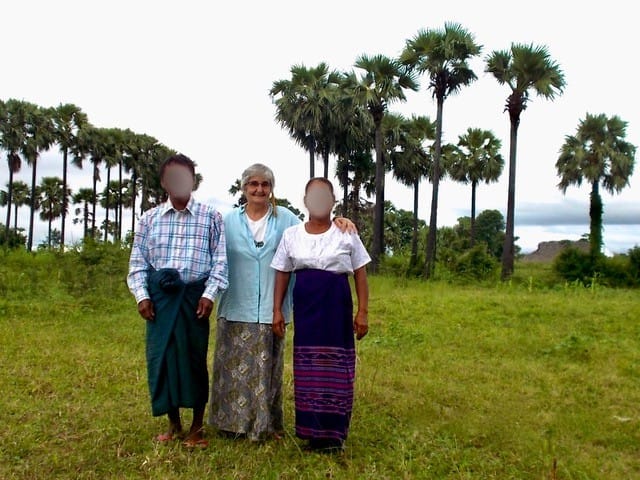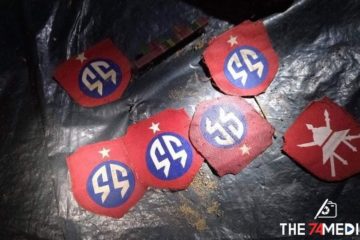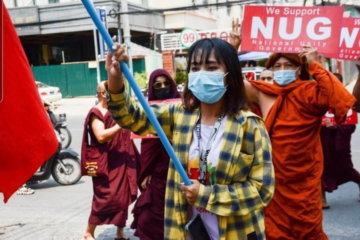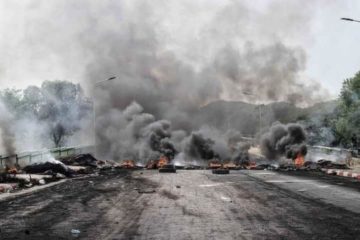
“Born 3 May 1945. Barcelona. Catalonia. Bad times after the civil war under fascist regime. Not too much to eat, but even so, happy childhood thanks to my parents who worked very hard. I’ve been lucky to study in the Swiss School in Barcelona where I studied German, French and English. Spanish as a foreign language. During the fascist government, Catalan language was forbidden. Great education. Open mind. I started working in the Tourism sector early, at 16 years old. Meanwhile I started my studies in Arts at the University. I went back to Barcelona years later and got married at 30 years old. I worked in the export department in a leather factory and then back in the tourism business. I retired too early, in 2003, for familiar reasons.
My husband, who died in 2005 visited lots of countries searching for new destinations for a well known travel agency. In 1986 he came back from Myanmar, Burma. He was invited by the Junta when they started to open the country. I still keep a Lonely Planet guide which the military confiscated from my husband when he landed in Yangon, as it was forbidden by the Junta. Coming back he literally said to me …. Listen I have visited a jewel. Forget Thailand, India, China. …. Burma is the place. He was astonished about the beauty of the country, but mostly about the hospitality of the Burmese people. Right in that moment, I fell in love with Burma/Myanmar.
It took me a few years… 2005. My husband died of a heart attack. He was only 59. In 2006 my husband’s friends sent me an air ticket to visit them in Vietnam. My first trip to Asia. I decided to solo travel to countries where my husband and I were planning to visit after he would retire at 60 years old. In 2009 I visited Burma. Two months. Bagan, trekking from Kalaw to Inle Lake, boat trip from Bagan to Mandalay, Ayeryawaddy River, Mandalay, Yangon. Mae Sot, Thailand, border with Myanmar. Two weeks in a school for Burmese children, mostly Karen, to help teachers.
I contacted a small local NGO who started to help a small school in a rural zone in Sagaing. They needed somebody to bring funds to them. I took the funds and deliver it to the persons assigned who came to meet me in Mandalay.
I travelled two more times to Burma. 2011 and 2013 visiting Rakhine State, Sittwe and Mrauk U. I am still working with this small NGO and trying to help the people there. It has not been easy, and now we are really sad and depressed about the situation.
Love late afternoons in U Bein’s Bridge, Amarapura, Mandalay. Light. Peace. Sitting in a coffee shop enjoying my favourite dessert … farludar.
Trekking from Kalaw to Inle Lake. Two days, one night. The rural life. Rich country. Colors. Trees. Spending the night in a buddhist monastery lost in the jungle.
Silence in the boat rowing all along the floating villages in Inle.
Late afternoons in Shwedagon.
Sharing meals with local people in different villages and rural zones.
Mrauk U. Lost empire. Poorest area ever. Rainy season. Greenfields. Temples.
Ngapali. Paradise. Beach.
So many memories. …….”


Ciaomyanmar: How was growing up under the Francoist regime?
Roser Giner Bruñó: My family and my neighbours were antifascists. Open minded. My dad’s family was practising mounteneering, so I had possibilities to NOT attend fascist activities held by the government. Studying in the Swiss School, I met children from many other countries with different cultures and religions. I had no contacts with the fascist movement at all. I constructed my own world with my friends and family. I started travelling all around the world with my best friend Josep. Education in the Swiss School has been essential for me. I remember when they taught us about the economic importance of rivers. I learned other cultures. In my youth I liked Brit and American, French and Italian music, but no Spanish. I did not went to bars, pubs where there was no foreign music. I even founded the Paul Anka Fan Club with my friends! The Government of Spain decided which books I was allowed to read. I discovered the cinema’s censorship. There were no political parties. No independent media. There was one official Catholic religion. Friends, family, neighbours we were all of convinced we should live as per our convictions and love life and other people. I always say to people who have never experienced living under a dictatorship that they should not easily talk and have opinions when they write about countries who do have lived under dictatorship. You have to escape of this totalitarian concept of ruling a country, and not being comfortable getting what they offer, which is a real shit. My family were workers. So my brother and I started working at an early age, 16. No university culture at home. I do not blame my family, we did not have much money. We were at least 6 people living in the same house, and sometimes other families were coming to live with us until they could get a job and a house. We have had an excellent education and we enjoyed our freedom 100%. I like reading books, learning as much I can, travel, culture consumer, always on the move. I experienced a long life under a fascist regime, but I managed to be happy even being against dictatorship.
CM: Can you share with us any story your husband told you about his first trip to Myanmar?
RGB: “This is Burma and it is unlike any land you know about”. Rudyard Kipling.
My husband travelled to Myanmar for the first time in 1996 representing the travel agency where he worked by that time. They were invited by the Burmese Government together with other companies to visit and show the country in order to be included in their travel programs. My husband was an expert travel agent specialized in Asia and Australia Pacific. He had a high knowledge of India, Pakistan, Sri Lanka, Thailand, China, Japan, Philippines, Indonesia, Malaysia, Tibet. Vietnam, Laos, Cambodia were by that time also ‘new countries’ … He used to carry with him the Lonely Planet Guide. Edition 1979 revised in 1996. In the front page you can read: Should you visit Myanmar ? See update at back of book. When passing through police and customs at Yangon Airport the guide was confiscated by the police. He thought this was not really a good entrance to this ‘new’ country he should promote. But he changed his mind when he visited Shwedagon Paya. This was the most spiritual, remarkable and amazing buddhist temple he had ever seen. And when he visited Bagan, he could not believe what he was seeing. Mandalay. U Bein. It was a short trip of 7 days. He also noticed the hospitality and open arms of the Burmese people. Open doors. Smiles. Happy faces welcoming foreigners. Offering the best food. Educated. How was this country closed for everyone else ? He started to work to include Myanmar in the program, and he started a combined tour Vietnam / Myanmar. He was convinced both countries were worth to be visited by travellers and tourists. Obviously hotels were not good at all, and they had to use luxury hotels only, like in Vietnam. He came back home very enthusiastic and non stop explaining what he discovered. And the tour guide who accompanied the group had a last nice surprise for him. He could manage to get back the Lonely Planet Guide and delivered it to him the day of departure. It has been my guide all along these years visiting Myanmar.

CM: What is your favourite memory about Myanmar?
RGB: It’s difficult to say. …. so many favourites memories.
At night Boditataung Pagoda, Monywa. Listening Principal Abbot of Monastery sharing his knowledge with three students. Silence. Peace. Illuminated stars. Atmosphere. Spirituality.
Navigating along the Kaladan River from Sittwe to Mrauk U. No other passengers other than me. Quiet waters. Never ending rice fields. Mrauk U temples.
Having my favourite dessert Farludar at a terrace nearby U Bein, Amarapura, Mandalay with my friends, four of them, monks. Funny, deep, relaxed, projects, stories, childhood.
Visit Paung Daw Oo Monastic School, Mandalay. Heartbreaking stories about Nargis Cyclon and children who escaped and started a new life. Awesome work in this monastic school teaching children and preparing youth to enter university.
6 pm in Shwedagon Paya. No words. Just be there. That’s all. Breathing. People’s faith and resilience. Never give up.

CM: Can you tell us something about your school project in Myanmar?
RGB: Our story started in 2008. A preschool for children 3 to 5 years. We give full support concerning teacher’s salaries, one meal a day, cooking. Maintenance and works in the building. Playing grounds. One day excursion at the end of the school year. We also cooperate with the village. Last year they started to work with electricity connections to the whole village as well as water distribution. We help funding projects, which unfortunately has not been possible because of the current bank situation.
The school is very important for the villagers. Families bring the children to school, so the eldest siblings are also able to attend school and avoid staying home to take care of the youngest ones, while their parents are working the whole day out from the village. And from the other side children 3 to 5 years they are really well prepared when entering to primary school.

CM: What is your favourite burmese food?
RGB: Burmese food is simple, but tasteful and delicious. Salads are delicious, thok, raw vegetables, tossed with lima juice, onions, peanuts, chilies. Also tamarind leaves. I remember one salad, Htamin lettap I think, delicious salad made with cooked rice.Noodles of course, and the number one mohinga. Another noodle dish with a very difficult name, include pieces of chicken in a spicy sauce. Shan-style noodle soup. Very tasteful. Burmese curries are the mildest in Asia. And my favourite dessert Farluda : rice noodle, basil seeds, coconut, pudding, vanilla ice cream, all layered in a glass and topped with almonds and rose syrup. I think there are different type of farluda in the different states of Myanmar. I remember the one in Mandalay as the best …..

CM: You have been an activist, a feminist, a revolutionary woman for your whole life. What does it mean for you?
RGB: It means breathing, living. There is no sense to live sitting down comfortably and ignoring what’s around you, your neighbourhood, city, country, world. I always tried to be involved with the most vulnerable. Doors and windows always opened, although sometimes you get bad experiences.
CM: Anything you would like to add?
RGB: My thoughts to our Burmese friends ……. You have shown, your spirit and resilience in the face of the violent suppression by the military. Day by day, you people of Myanmar realize you cannot depend on outside help. Even if the international community fails to help Myanmar, the Revolution goes on and will go on. People will win and people all over the world stand with you. My absolute empathy for the fallen heroes and their families. Salute to them. You will win and peace and freedom will be back in Myanmar. Stay safe. Be brave.
 Myanmar: interview to Roser Giner Bruñó
Myanmar: interview to Roser Giner Bruñó


0 Comments